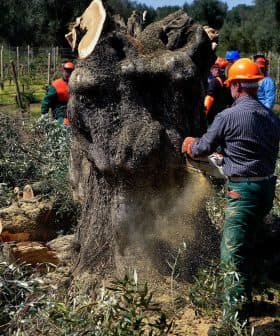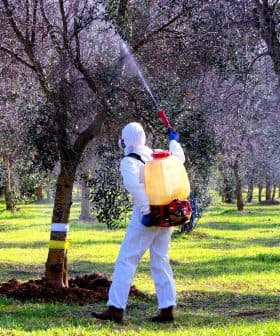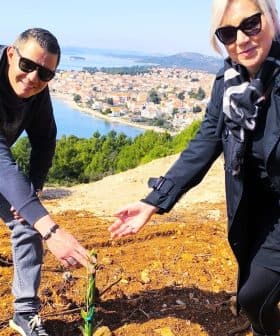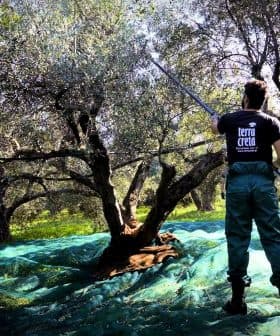As Pesticide Bans Loom, Croatian Agronomists Advise Other Methods to Stop the Olive Fly
The use of several popular pesticides will be prohibited in Croatia after the 2022 harvest. Instead, traps, mineral treatments and other agents can help protect olive trees.
 Olive tree, Dalmatia
Olive tree, Dalmatia  6.5K reads
6.5K readsThe olive fruit fly is the most dangerous pest for olive growers, as each female can lay up to 50 eggs on the fruit, causing significant damage to crops over multiple generations. To combat this threat, new integrated conservation strategies, such as the Karate Trap B from Syngenta, are being recommended to protect olive groves and reduce the population of the olive fruit fly.
Olives are attacked by more than 250 pests, but the olive fruit fly (Bactrocera oleae) is by far the most dangerous.
The flies can destroy all the efforts of olive growers and damage the entire crop. Namely, each female lays an average of 50 eggs, leaving one egg on each drupe.
As there are three or more generations, immeasurable damage is possible not only for the current harvest but for the following one as well.
See Also:Experts in Italy Offer Advice for Olive Growers Combating the Fruit FlyAs a result, a growing number of producers are turning to pest management professionals to help them protect their trees and livelihoods.
Among the problems facing growers is a lack of appropriate insecticides that may be used in the groves. The European Commission banned dimethoate in 2019, the future of phosmet is uncertain and the fly’s resistance to deltamethrin has already been proven.
In the future, olive growers have fewer insecticide options to which to turn.
The Croatian Ministry of Agriculture has said it will prohibit the sale of Imidran (phosmet) after May 1 and its use after November 1. The ministry will also prohibit the sale of Insegar (phenoxycarb) after May 31 and its use after December 31.
Starting in 2023, the ministry will begin monitoring olive fruit for residuals of the two pesticides and take punitive actions against those who keep using them.
However, Josip Ražov, a biocontrol technical expert at Syngenta, an agri-tech firm, said it is possible to protect olive groves without these products.
New solutions are being developed in the form of integrated conservation strategies, one of which is the use of traps for mass capture. Ražov said Syngenta’s Karate Trap B is one of the newest control methods now available in Croatia.

Josip Ražov
According to Syngenta, this trap is a “massive capture device for the control of the olive fly using the attract and kill technique, composed of a specific attractant, a trap composed of a base and lid with insecticide.”
Ražov said this is the only trap on the market that is recommended for use right now and stands on the tree year-round, until next spring.
The olive fruit fly is already present in the groves, he warned. Therefore, he argued that these traps should be set up even before the flies have enough food on the olive trees.
Ražov added that the highest numbers of trap captures are recorded in the spring until the onset of high temperatures, and in the autumn during and after the harvest.
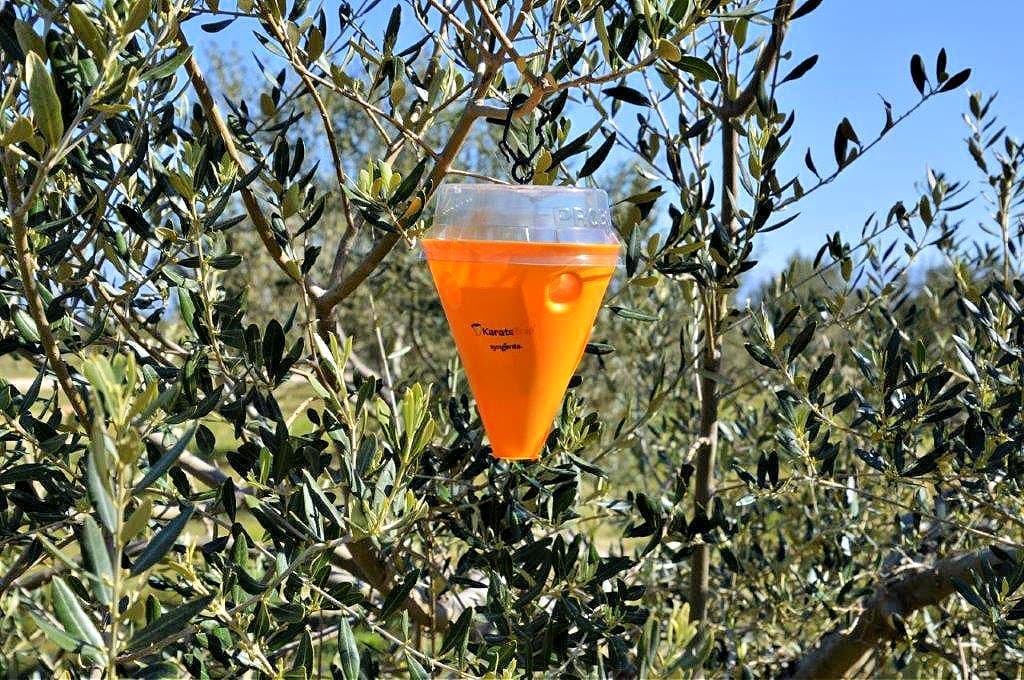
As a result, the trap that is present in the olive grove all year has greater potential to catch and reduce the population, and thus significantly reduce damage.
See Also:Researchers Unveil the Latest Technologies to Help Harvest and Produce Olive OilRažov said the more it is used on a larger surface and over several years, the better the result, which is why he recommended setting the trap in early May and using it until next spring.
Other types of traps intended for the mass catch method, which are currently on the market (Eco Trap, Super Track) also are good models that have proven effective in combating flies but are not designed for year-round use.
Instead, these traps are installed about a month to two days before harvest and do not last one year.
Croatian agricultural associations also recommend using traps, regardless of the design, on as large an area as possible to achieve the best results.
It is also very important to control the fly in this way by placing traps in home gardens in urban areas that are generally not protected, and are a breeding ground for the pest.
However, setting up and monitoring these traps can be costly. To that end, Ražov reminded growers that they may apply for IACS measure 10.1.12 and receive up to €293 per hectare of aid.
Along with using the traps, Ražov said other types of interventions may be made before the harvest. For example, growers can also spray kaolin, an aluminosilicate soft white mineral, or an approved insecticide.
Marijan Tomac, an agronomist, further recommends that growers use Success Bait, produced by AgroChem Mak, “to hunt olive flies en masse, regardless of whether they have olives in organic or conventional production.”
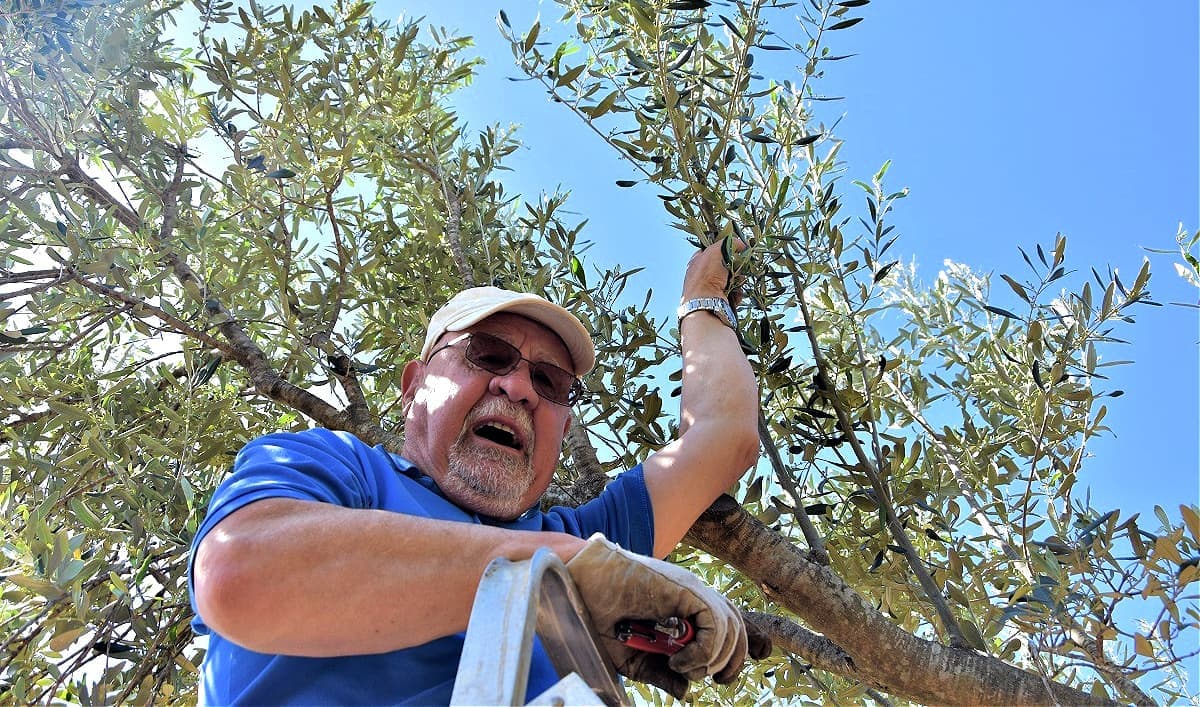
Marijan Tomac
Success Bait, in addition to insecticides (spinosad), contains an agent that attracts flies and is very effective in controlling the olive fly before it lays eggs on the fruit.
By monitoring the elevated presence of adult olive flies, several Success Bait treatments may be performed during July, August and September.
In the period from August to the beginning of September, a 3‑percent solution of Success Bait is usually applied to the olive trees three times.
The treatment procedure itself is as follows. Several lower branches on the south side of the olive grove are treated. A certain number of trees on the edge of the olive grove are selected or every other tree in the edge rows is treated. All trees in every other row can be treated.
Share this article


